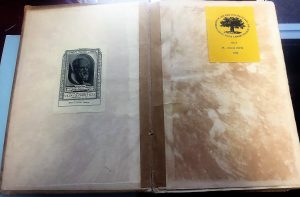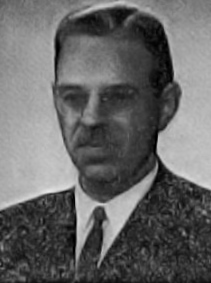In theory, I’ve always known that our library stays open until one o’clock in the morning, for all those students that function best after 8PM. Because of this piece of information, and the fact that I have access to the key that unlocks the archives, I’ve always assumed that I … Continue reading
In theory, I’ve always known that our library stays open until one o’clock in the morning, for all those students that function best after 8PM. Because of this piece of information, and the fact that I have access to the key that unlocks the archives, I’ve always assumed that I could very easily stay in the archives until the library closed. Tonight (or this morning, depending on how you like to look at things) I proved this correct.
In order to catch up with our timeline of book scanning, Savannah and I met outside the library just after 7PM. After brief chitchat (which was started by Savannah yelling my name from across an entire quad), we went into the archives and found the production books from the year after the school integrated boys in, 1958.
The College Night production books have not always had the grandeur that Savannah and I have described, with multiple moving parts or plexiglass or sarcophagus-shaped holders. In fact, the earliest book we have (from 1938) is actually not a book at all. Instead, they are receipts and lists, neatly filed into folders by some archival intern years before me. I know not of how they were stored before that, and I’ve not had the opportunity to ask the archivist if he knows, either. Savannah and I were aware of this lack of actual book before we began scanning. When we scanned the book for the 25th anniversary of College Night, 1944, we were eager to get through it so that we could get to the more interesting books. We believed the switch from files of paper, rather than the binders that Savannah and I are more familiar with, began in 1948.
In this thinking, we were incorrect. After going into the archives this evening and discovering that the production book for 1958 was not, in fact, a binder, has proven to us that the 1948 Purple book is simply an outlier. The production books for 1958 (thankfully separated into Purple and Gold, which the book for 1944 had not been) were once again files of paper. It was almost as if they were a stepping stone towards what we have today- the book had familiar elements, such as drawings of all set design and costuming, as well as lighting queues and a copy of the script and music. However, like the book from 1944, it also included receipts and purchasing records, which no longer are included in production books; it also lacks a cover or binding of any kind.
(This makes our endeavor for these books seem to stand on shaky legs- I do believe that one of the most common definitions our class included in how a book was defined was that it was, in fact, bound in some way.)
Scanning these unbound production records seemed to take a shorter amount of time than it actually did. Savannah and I have gotten the scanning process down to a science, and between the two of us the papers are able to be scanned quickly and have yet to get out of order (knock on wood). With the Great British Baking Show playing in the background, we knocked out both books from 1958 in about three and a half hours. (Gold Side’s book was 82 pages long, and Purple’s ended up being 71.)
Moving on from the 1958 books to the ones from 1969 (the 50th anniversary of College Night) was undoubtedly one of the best parts of the evening. By 1969, the books had completely evolved into the format Savannah and I recognize best- that of a binder/scrapbook, decorated carefully and listing all the people involved, while also documenting the creative portion of the process.
The initial excitement faded, though, as we got deeper into the book. I watched as the clock continued to tick closer and closer to 12:30. This was the time I had set in my head as wanting to be out by, as they begin shutting off lights about 10 minutes before the library closes, and while the archives are only mildly creepy to be in alone during the day, I do not want to imagine what they are like in the dark during the witching hour on a supposedly very, very, very haunted campus. Finally, just before 12:20, we scanned the final page of the Gold 1969 book. The .pdf took until 12:28 to go through the three different processing and saving steps that it must do, but at 12:28 on the dot we had a file called “Gold 1969001” saved on the computer and were able to leave the archives.
The reason this file took about eight minutes to save was due to its large size, well over 100 pages long (each of which must be processed individually by our scanning software). When Carey and I had first discussed digitizing the production books, we had done a little bit of math. We have books dating back to 1938, which is 79 years. The two of us assumed that there was a book for each side each year, so you must double 79 to 158. During this initial meeting, Carey estimated that each book was about 45 pages long. 150 x 45 = 7,110 pages that would need to be digitized. After tonight’s work, I’ve realized that this estimate of 45 pages per book was a drastic underballing of the number- the average page count is probably something around 90. For the sake of amusing myself (and the idea that I’m going to continue this digitization effort in the future after this class), let us now do this calculation. 158 books x 90 pages per book = 14,220 pages to be digitized.
14,220.
Fourteen thousand, two hundred and twenty.
That is s o m a n y.
Thankfully, Savannah and I have chosen only nine books to digitize. The other 149 (assumed) books that exist will have to wait for their turn.


